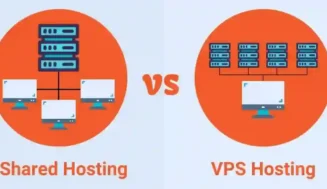A Comprehensive Comparison Guide for Business Intelligence Solutions
In today’s fast-paced business landscape, data is at the heart of strategic decision-making. Businesses of all sizes are recognizing the importance of leveraging data to gain insights and stay competitive. This has led to the rise of Business Intelligence (BI) solutions that empower organizations to transform raw data into actionable insights. In this comprehensive guide, we will delve into the world of BI solutions, comparing their features, benefits, and use cases. Whether you’re a small startup or a large enterprise, this guide will help you navigate the sea of BI solutions and make an informed choice.
1. Introduction to Business Intelligence Solutions

Business Intelligence solutions encompass a range of tools and technologies designed to gather, analyze, and visualize data for strategic decision-making. These solutions enable organizations to transform raw data from various sources into meaningful insights. By doing so, companies can identify trends, patterns, and opportunities that may have otherwise gone unnoticed. BI solutions play a pivotal role in driving informed decisions and enhancing overall operational efficiency.
2. Key Features to Consider
When evaluating BI solutions, certain key features should be on your radar:
Data Connectivity
A robust BI solution should offer seamless connectivity to various data sources, whether they are stored within the organization’s databases, cloud services, or external platforms.
Data Visualization
Effective data visualization is crucial for conveying insights in a digestible manner. Look for solutions that offer a wide array of visualization options, from charts and graphs to dashboards and interactive reports.
Query Performance
BI tools should provide fast and efficient querying capabilities, allowing users to explore large datasets without experiencing significant delays.
Scalability
As your organization grows, so does your data. Choose a BI solution that can scale alongside your business without compromising performance.
3. Popular Business Intelligence Solutions

3.1 Power BI
Microsoft’s Power BI is a leading BI solution known for its user-friendly interface and seamless integration with other Microsoft products. It offers a range of data visualization options and is particularly well-suited for organizations heavily invested in the Microsoft ecosystem.
3.2 Tableau
Tableau, now part of Salesforce, is lauded for its powerful data visualization capabilities. It provides users with the tools to create interactive and shareable dashboards, making it an excellent choice for collaboration.
3.3 QlikView
QlikView stands out with its associative data model, allowing users to explore data in a more intuitive manner. It’s a versatile solution suitable for businesses seeking dynamic insights.
3.4 Looker
Acquired by Google Cloud, Looker focuses on collaboration and data exploration. Its platform allows teams to create and share reports while maintaining data governance.
4. Pricing Models and Cost Comparison
The cost of implementing a BI solution can vary significantly based on factors such as the vendor, features, and deployment model. Some solutions offer flexible pricing based on usage, while others have flat-rate licensing fees. It’s essential to evaluate your organization’s budget and projected usage when comparing costs.
5. Industry-Specific Applications
Different industries have unique data requirements. Look for BI solutions that offer industry-specific templates and features tailored to your sector, whether it’s healthcare, finance, retail, or manufacturing.
6. Integration Capabilities
BI solutions should seamlessly integrate with your existing tech stack. Consider solutions that offer connectors to commonly used platforms like CRM systems, databases, and cloud services.
7. Data Visualization Options
The ability to present data in a visually compelling way is a hallmark of effective BI solutions. Choose a solution that provides customizable and interactive data visualization tools to suit your reporting needs.
8. Security and Compliance Measures

Data security is paramount. Ensure that the BI solution you choose adheres to industry-standard security protocols and offers features like data encryption and role-based access control.
9. Pros and Cons of Business Intelligence Solutions
Pros:
- Informed Decision-Making
- Enhanced Data Visibility
- Increased Operational Efficiency
- Predictive Analytics Capabilities
Cons:
- Initial Implementation Costs
- Learning Curve for Complex Solutions
- Data Privacy and Compliance Challenges
10. FAQs
Q1: What is Business Intelligence?
Business Intelligence (BI) refers to the technologies, processes, and tools used to analyze and present business information to support decision-making.
Q2: Can BI solutions work with multiple data sources?
Yes, many BI solutions offer connectors and integrations that allow them to work with a variety of data sources, both internal and external.
Q3: Is cloud-based BI better than on-premises?
Both options have their merits. Cloud-based BI offers flexibility and scalability, while on-premises solutions provide more control over data.
Q4: How long does it take to implement a BI solution?
The implementation timeline varies depending on the complexity of the solution and the size of the organization. It can range from a few weeks to several months.
Q5: Can BI solutions help with predictive analytics?
Yes, many BI solutions incorporate predictive analytics capabilities, allowing organizations to forecast future trends based on historical data.
Conclusion
In conclusion, choosing the right Business Intelligence solution is a critical decision that can significantly impact your organization’s growth and success. By considering factors such as data connectivity, visualization options, integration capabilities, and industry-specific applications, you can make an informed choice that aligns with your business goals. Remember that there is no one-size-fits-all solution, so take the time to evaluate your organization’s unique needs and requirements. With the insights gained from this comprehensive comparison guide, you’re well-equipped to embark on your BI journey with confidence.







